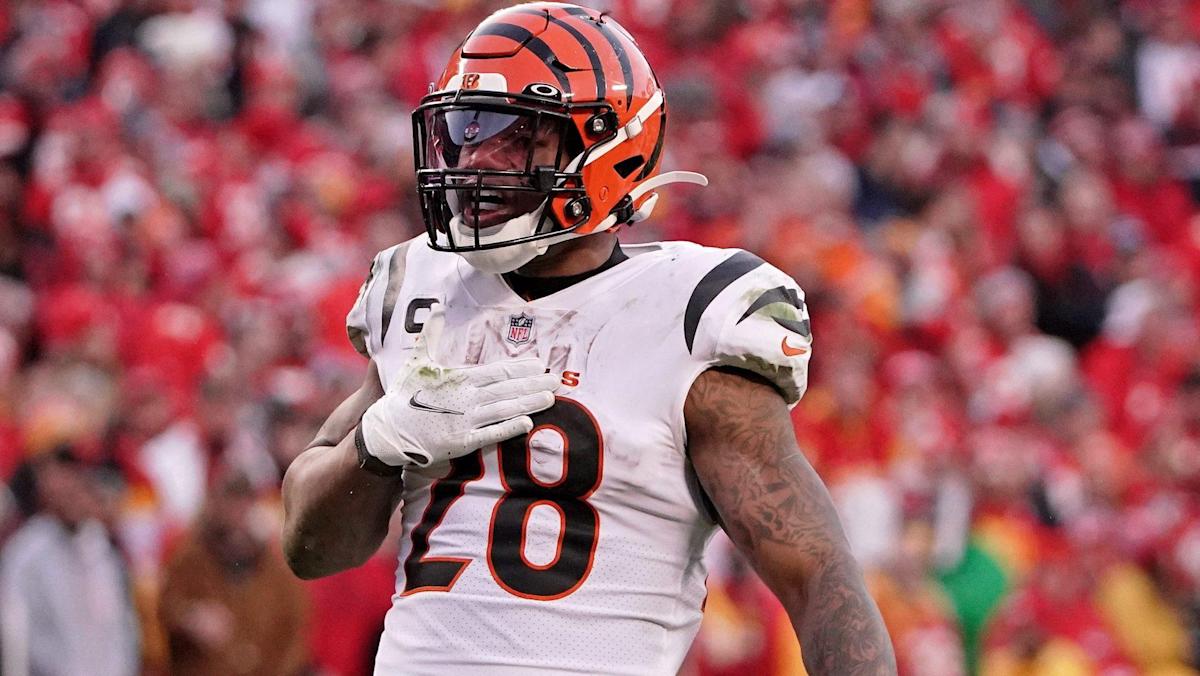
An important question lingers regarding the final moments of Sunday’s AFC Championship thriller in Kansas City, where the Bengals found a way to beat the Chiefs in overtime.
After rumbling 13 yards from the Chiefs’ 25 to their 12, Cincinnati running back Joe Mixon appeared to drop the ball without being down by contact. The ruling on the field was that Mixon had given himself up. As MDS noted yesterday, that (not illegal formation or something else) was the reason why Chiefs coach Andy Reid spoke to the officials about the decision not to conduct a full-blown replay review, which applies to any potentially reviewable plays in overtime. Reid confirmed it after the game.
By rule, “a runner declares himself down by . . . falling to the ground or kneeling, and clearly making no immediate effort to advance.” Thus, the ruling on the field was that, after he fell, Mixon clearly made no immediate effort to advance. On review, then, the question would have become whether he clearly and obviously did the opposite of clearly making no immediate effort to advance.
Putting it another way, was it clear and obvious that Mixon fell down and did not immediately make no effort to advance the ball? The fact that he got up, deliberately dropped the ball, and celebrated the run would be relevant evidence that he did not make an “immediate effort to advance.”
The issue once arose during a 2011 game between the Giants and Cardinals. New York receiver Victor Cruz was deemed to have given himself up after he dropped the ball, without being down by contact. At the time, the rulebook did not include the word “immediate.” At some point after that (we’re trying to find the specific year), the word “immediate” apparently was added to the rule. That makes the play dead if/when the running behaves as if the play is dead, eliminating any sort of delayed-action okey-doke where the runner initially acts like the play is over and then sprints for paydirt.
All things considered (and in light of the league’s ongoing quest to make the game safer), the notion that Mixon declared the play over by acting as if the play was over becomes enough to make the play over. More importantly for these purposes, it becomes impossible to overturn the ruling on the field.
As MDS noted after the game, any finding of a fumble also would have required video evidence of a clear recovery by the Chiefs. Although it happens in a flash at the edge of the screen, it appears that a Kansas City player did indeed scoop up the loose ball, just in case.
There’s another question that would have been relevant to replay review of the Mixon play. Was he down by contact? Implicit in the ruling that Mixon gave himself up was a finding that had not been contacted by an opponent before he fell. The question of whether he gave himself up would become moot if he was down by contact. Since the ruling on the field was that he gave himself up, replay review would have to reveal clear and obvious evidence that he was down by contact, if there was clear and obvious evidence that he didn’t give himself up.
That’s a lot of clear-and-obviouses, I know. The bottom line is that, in looking at the play repeatedly, there was nothing clearly and obviously wrong with the ruling on the field. Mixon acted as if the play was over. Via replay review, it would have been difficult if not impossible to conclude that the video evidence clearly and obviously shows that he didn’t.
Joe Mixon ruling seems to be the right call originally appeared on Pro Football Talk
